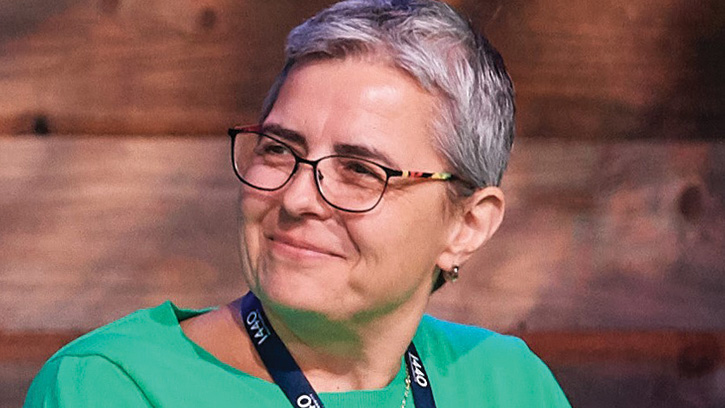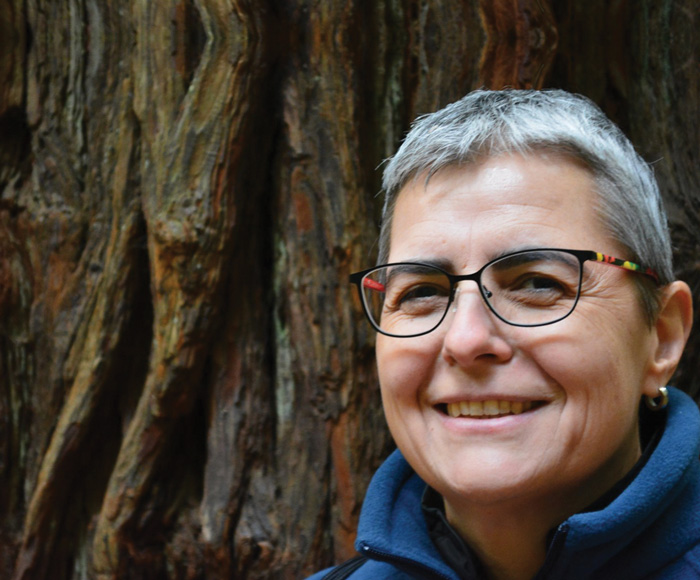Maricel Maffini on Chemicals of Concern
Packaging | APPLIED SCIENCE
More than 1,000 chemicals approved for direct food contact packaging worldwide are a concern because they are linked to health and environmental issues (Groh et al. 2021). Currently, the top chemicals of concern (COC) and their predominant uses in packaging are phthalates in PVC, metal closures, and other packaging; bisphenol A (BPA) in polycarbonate bottles and metal cans; per- and polyfluoroalkyl substances (PFAS) in grease-proof coatings on paperboard; and perchlorate in business-to-business dry ingredient tote liners.
Several factors have spurred renewed interest in developing coordinated action on COCs. Recent legislative bills are prompting the reevaluation of approved chemicals of concern, but these also create a complex web that is tough for industry to navigate. In the United States, U.S. Rep. Jan Schakowsky (D-Ill.) introduced the Food Chemical Reassessment Act of 2021 (FCRA), which would, reassess 10 COCs, including PFAS, phthalates, and BPA. The Toxic Free Food Act, introduced by U.S. Rep. Rosa DeLauro (D-Conn.) would close the so-called generally recognized as safe (GRAS), loophole. In addition, the Coalition of Northeastern Governors has revised the Model Toxics in Packaging Legislation to include PFAS, phthalates, and other chemicals in packaging. More than 200 state policies can be seen in the Safer States database ((States 2022).
Since only about 40% of approved food contact chemicals have endured rigorous food safety assessments, there is a need to fill obvious data gaps, as well as to improve the science. In addition, there are pressing end of life concerns about packaging that contains chemicals of concern, which cannot be safely recycled, reused, incinerated, landfilled, or composted.
In this interview, Maricel Maffini, an internationally recognized scientist committed to public health advocacy through regulation and oversight of chemical exposure, provides us with a window into the world of chemicals of concern in food packaging. During her career, Maffini has specialized in research focused on carcinogenesis, endocrine disruption, and tissue engineering, conducted studies on regulatory chemical testing guidance, and submitted recommendations for improvement to the FDA. As an independent consultant, she successfully persuaded FDA to eliminate unsafe uses of chemicals in food.
How did you become interested in the connections between biology, medicine, and food packaging?
I grew up on a dairy farm in Argentina and spent a lot of time exploring nature and making connections. As a young girl, I saw airplanes fumigating crops and then saw the leaves shrinking on the trees two days later. Another defining experience was that a neighbor’s son was a biochemist and had a small laboratory set up in his parents’ living room. He would come once a week and collect samples of blood and urine. I went there once and was intrigued by the equipment, process, and ideas. After high school, I went to biochemistry school, and this was a blend of chemical engineering, biology, and medicine and this gave me a big perspective of how the body works and created a thirst for more knowledge and a PhD.
What exactly is it about chemicals of concern that makes you want to get working each morning?
When I fully understood the impact of chemicals, I wanted to work in this field to do what I can to eliminate and minimize harmful exposures. I was working with BPA, which is used in food packaging and is still approved by the FDA. Food connected with me because everybody eats; [it’s] where I thought I could make the most impact. We've been telling people they are responsible for what they eat. But it’s the duty of industry and regulatory decision-makers to make sure safe food is available for all populations.
What aspects of COC deserve increased focus by food packaging researchers?
Packaging plays a crucial role in protecting food. In my opinion, people who work on packaging and making sure that our food is safe should be focusing on three pillars to strengthen food packaging safety in the next five to 10 years.
The first is to improve transparency. There is a lack of transparency in what is in packaging now. At the end of the supply chain, we have consumers. When consumers hear that there are chemicals that harm them in packaging, they look back to the brand, the brand looks to the packaging converters, and so forth up the supply chain. But there are few answers [about] what is in the packaging and why. Greater transparency within the supply chain would both ensure that chemicals added by sequential packaging converters are within compliance and are tracked to allow for more clear brand understanding of what is in direct contact with food. It would allow brands to decide whether they accept certain chemicals in their products. This would also help define what packaging has the least environmental impact versus the abundance of confusing and greenwashing claims.
The second pillar is to embrace collaboration. We–an array of partners, including industry, regulators, and academic scientists–are all in this together to make our food supply as safe as possible. Regulators are usually more comfortable keeping industry happy rather than taking a leadership role in ensuring that food remains safe, even if that means some chemicals’ uses are eliminated based on new scientific information. The good news is that when a reassessment of safety has occurred, as with the required removal of trans fats from foods, collaboration between partners created positive energy and demonstrated to consumers that we could work together to make change possible. However, we have not seen this level of leadership or collaboration with food packaging. If we focus on the same goal of a safe food supply, we can rebuild consumer trust in packaging. This can be done with better collaboration between those in industry [who] are trying to address removing harmful chemicals and scientists who assess the effects of chemicals on humans and the environment.
Finally, the third pillar is test, test, test. There are different aspects of testing that need to be expanded. First, we can test current packaging in use to ensure that it does not have chemicals of concern. It’s not unusual for anyone who can afford it to test packaging for specific chemicals. There have been a lot of reports of PFAS testing in all sorts of packaging by journalists, NGOs, and consumers. Second, and critically, testing of COC's effects is also needed. Now we have a situation where we are using chemicals on which limited testing has been done. Most packaging chemical testing is focused on DNA damage [and] genotoxicity. If more is done, it may measure the exposure impact of a healthy adult for a limited period. I'm afraid that's not adequate and is unacceptable. We need to ensure developmental exposures are assessed to avoid long-lasting harmful effects and account for people with compromised health conditions; we need to address the health impact for various conditions.
Would you clarify what you mean by impact of condition?
Sure. Essentially, we have large gaps in determining the impact of chemicals used in food packaging. One large gap is in the toxicological impact. We have known for decades that chemicals at very, very low levels can have a toxic effect, such as causing cancerous tumors without damaging DNA. However, chemicals used in packaging can be authorized if they are not considered likely to produce DNA mutations or are below an estimated exposure of half part per billion without any additional data. So, we need to fill the gap and test chemicals we use in food packaging for factors other than the impact on DNA. Fortunately, there is a large body of knowledge on the impact of chemicals on these other factors that can be applied to food packaging.
Critically, another gap is the hormone impact gap. We do not commonly assess if there is a differing health impact of chemicals on the hormonal system. Hormones are critical during development, [and] there is plenty of evidence of endocrine disrupting chemicals affecting normal development; however, we seldom test chemicals in pregnant animal models to understand what effects occurred in the offspring when they grow up. This gap needs to be filled with research and testing that assess the immediate and long-term consequences of endocrine disrupting chemicals. For example, there could be an immediate anatomical change that can be [observed], or the effect could take a long time, manifested years later when a [child] who was impacted while in the womb reaches puberty, for instance. This is critical because, with some of the chemicals used in food packaging today, we could be affecting two generations: the generation in the womb and the next.
[Regarding] the long-term impact, it is important to understand how we assess chemicals now. Now, if there is any testing done for approvals, we extrapolate from a healthy person or a healthy animal that has been exposed for 90 days. We do not research if the chemicals remain in the body. We know this is true for fluorinated chemicals. Also, we do not assess the impact of repeated exposure. For example, I have a ham and cheese sandwich for lunch every day, so I repeatedly expose myself to packaging from ham, cheese, bread every day. The long-term impact of this repeated exposure to food packaging needs to be considered.
In your paper, 2013 Brain Drain and more recent publications, you’ve addressed cumulative effect of chemicals. Why is this aspect of COC important to you?
The 2013 paper addresses something that I think is fundamental for anything related to chemical exposures, and that is the cumulative effect of chemicals (Maffini and Neltner 2013). The cumulative effects of chemicals are sometimes described as “something from nothing.” This paper addressed the need to group chemicals with similar toxic effects. This aspect of looking at chemicals by their class is critical because we are not exposed to one chemical at a time.
The 2020 op-ed is an update on this [published] in Environmental Health News (Maffini and Neltner 2020). Cumulative effects of chemicals with similar health impacts have been studied in the EU and by EPA scientists (Conley et al 2021). This work showed that a mixture containing one-tenth of the dose that caused no effect of each of the chemicals can have extraordinarily bad effects.
Looking ahead, what do you see as the biggest challenge in eliminating chemicals of concern and ensuring our food packaging is safe?
Being scared to admit we were wrong. There has been a strong focus on packaging performance sometimes at the detriment of safety. We must reconsider that way of doing business to ensure we have safe food packaging. Use of a chemical approved in 1962 with no or little data means that it is legal; it does not mean it is safe. We need to revisit our decisions based on sound science and current scientific principles. It should not be hard to say we are making changes to our products to ensure they are safe for all. It would be irresponsible not to act when the evidence shows a chemical is unsafe.
Science is progressing, and so should we. We can make corrections, and we do all the time in other fields, such as rebuilding bridges so they are stronger. For so long, performance has been the most important piece of developing food packaging, which makes total sense. We define packaging performance by many factors, such as compostability, recyclability, or providing a certain barrier property. We need to add safety to this performance criteria and it should be the norm to make changes to have safer food packaging.
You are known for disarming conflict and engaging stakeholders with conflicting goals. How does this aid your work?
This aids my work because I can be at the table, contribute to the discussion and be part of the solution. And, I have a great mentor and colleague who helped me understand the importance of being at the table. People who shout and stomp are not invited back to the table and their influence dwindles. Real progress can be made by listening more, speaking less, and knowing when and how to push back. Wanting to be a part of solution is why I work with everybody: businesses, academics, NGOs. From helping businesses communicate what they do to policy work, thinking how to improve risk assessment methods, to how to do experiments that incorporate the cocktail of chemicals.
Sometimes you see that people who opposed your work most become the biggest advocates when you take the time and energy to define common goals. It would be best if you got to know who else is playing in this sandbox, how we can play together, identify what we need to make a change, and then work to get it done.
Do you see a link between your ability to define public policy and more effective research?
Yes, this link is critical thinking. The ability to think critically is essential to researching chemicals of concern in the lab and in defining public policy. To solve the problems I work on today, I use a version of the same critical thinking skills that I used to develop a method to transplant a tiny implant under the kidney capsule of a mouse with no immune system. On the flip side, when I do policy work on chemicals and how to improve methods for risk assessment it allows me to identify data gaps and help design experiments to fill those gaps.
When I was working in the lab, I was always interested in the big picture of why something happened rather than how. This big picture approach led me to the policy work, which itself is an even bigger picture. The understanding of policy, what works, what doesn’t, what’s missing, helped me identify science research gaps that needed attention to close the loop and effect change.
Meet Maricel Maffini on LinkedIn
References
Maffini MV and Neltner TG. OpEd: How the FDA ignores the law when approving new chemical additives to food. Environmental Health News Dec.23, 2020. https://www.ehn.org/health-issues-associated-with-food-additives-2649620272.html
Justin M. Conley, Christy S. Lambright, Nicola Evans, Mary Cardon, Elizabeth Medlock-Kakaley, Vickie S. Wilson, L. Earl Gray., 2021. Environment International, Volume 156. https://doi.org/10.1016/j.envint.2021.106615.
Maffini MV and Neltner TG., 2013. Brain drain: the cost of neglected responsibilities in evaluating cumulative effects of environmental chemicals. J Epidemiol Community Health 2015;69:496–499. http://dx.doi.org/10.1136/jech-2014-203980.
Groh, K.J., Geueke, B., Martin, O., Maffini, M., Muncke, J., 2021. Overview of intentionally used food contact chemicals and their hazards, Environment International, Volume 150. http//doi.org/10.1016/j.envint.2020.106225.
Safer States (2022). https://www.saferstates.org/bill-tracker
Vital Statistics
Credentials: BS, laboratory medicine and PhD, cancer biology, Universidad Nacional del Litoral School of Biochemistry and Biological Sciences, Argentina
Experience: Independent consultant, MVM Consulting; senior scientist, Natural Resources Defense Council; senior officer, The Pew Charitable Trusts; researcher, Tufts University School of Medicine
Noteworthy: Successfully persuaded FDA to eliminate unsafe uses of chemicals in food; published “Generally Recognized as Secret” report on major food chemical safety determinations concerns; petitioned FDA to ban uses of perchlorate and long-chain perfluorinated compounds in contact with food
Leadership: Elected as a Fellow to the prestigious Collegium Ramazzini in Italy (2020); member, Food Packaging Forum Science Advisory Board (Switzerland); scientific advisor, Breast Cancer Prevention Partners; chair and member, IFT Toxicology and Safety Assessment Division (2012–2016)
Fun Fact: Her family’s business was a dairy farm, but she doesn’t drink milk.






